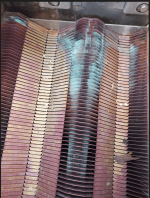Hello All,
A service call on my 8 yr old Hayward Heater resulted in it getting red tagged and shut down. The tech said the CO levels hit 650ppm, and says the heat exchanger is likely 'clogged'. Says he can attempt to remove and service the heat exchanger, but recommends to just replace the whole heater.
I am by no means an expert, but to my understanding, the heat exchanger is a closed system full of water that sits above the burner. I am unclear how any failure of the heat exchanger could cause CO levels. Would it not more likely be related to a problem with the burners? The explanation given sounds more related to a home furnace where a cracked heat exchanger allows the air to mix
Not opposed to replacing the full unit, just want to ensure I am acting on good advice.
Heater is Natural Has, Pool is Salt.
A service call on my 8 yr old Hayward Heater resulted in it getting red tagged and shut down. The tech said the CO levels hit 650ppm, and says the heat exchanger is likely 'clogged'. Says he can attempt to remove and service the heat exchanger, but recommends to just replace the whole heater.
I am by no means an expert, but to my understanding, the heat exchanger is a closed system full of water that sits above the burner. I am unclear how any failure of the heat exchanger could cause CO levels. Would it not more likely be related to a problem with the burners? The explanation given sounds more related to a home furnace where a cracked heat exchanger allows the air to mix
Not opposed to replacing the full unit, just want to ensure I am acting on good advice.
Heater is Natural Has, Pool is Salt.





